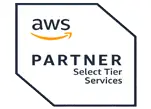 Server
Colocation
Server
Colocation
 CDN
Network
CDN
Network
 Linux Cloud
Hosting
Linux Cloud
Hosting
 VMware Public
Cloud
VMware Public
Cloud
 Multi-Cloud
Hosting
Multi-Cloud
Hosting
 Cloud
Server Hosting
Cloud
Server Hosting
 Kubernetes
Kubernetes
 API Gateway
API Gateway

As of 2025, Magento—now known as Adobe Commerce—continues to be a powerhouse in global eCommerce. According to BuiltWith, over 250,000 online stores rely on Magento’s flexibility and scalability. With the rise of hybrid cloud infrastructure and cloud-native services, businesses have a pivotal decision to make: Should I go with Magento Open Source or opt for the Cloud (Adobe Commerce Cloud)? And critically—what does Magento pricing look like across these editions?
This decision isn’t just about license cost. It factors in server infrastructure, hosting, performance, security, support tiers, and long-term growth potential. In this blog, we’ll break down all of that—letting you forecast total cost of ownership, pick the right edition, and align your Magento pricing strategy with your business goals.
Free to download and use
Ideal for startups, SMBs, developers with in-house technical teams
You manage everything: server, hosting, security, performance optimizations, updates
A fully managed SaaS-native offering
Comes with a license fee and includes hosting on AWS or Azure
Built-in support, high availability, scalability tools, automated performance tasks
While there's no software license fee, you must account for:
|
Cost Item |
Description |
|
Server & Hosting |
Cloud VPS, dedicated servers, or colocation. Expect ₹1,799–₹15,000/month depending on traffic and configuration |
|
SSL & Security |
Free from Let's Encrypt; paid firewalls or WAF add ₹500–₹2,000/month |
|
Storage & Bandwidth |
50–200 GB storage and 1–5 TB bandwidth usually sufficient for mid-sized stores |
|
Maintenance & DevOps |
Could be in-house (cost absorbed) or outsourced (₹10 k–₹50 k/month) |
|
Backups & Disaster Recovery |
Offsite backup solutions cost ₹1,000–₹3,000/month |
|
Support & Extensions |
Community help is free; premium plugins and custom support range from ₹5 k to lakhs annually |
While the base software is free, a realistically managed Magento store using robust cloud server hosting often costs ₹5,000–₹30,000/month total, depending on scale.
This edition bundles both functionality and infrastructure:
|
Price Tier |
Annual License (USD) |
Approx. INR Equivalent |
|
Small Business |
$40,000 |
~₹33 lakh |
|
Mid-Market |
$125,000 |
~₹1.03 crore |
|
Enterprise |
$250,000+ |
₹2 crore+ |
Key components included:
Licensed software with advanced B2B features
Managed hosting on AWS/Azure (with CDN, performance environments)
Developer sandboxes, CI/CD pipelines, deployment automation
4–5 nines SLA, PCI DSS/HIPAA compliance, 24×7 Adobe support
Support and maintenance bundled; fewer hidden costs
Upside: You get enterprise-grade infrastructure and support with predictable budget outlay. Downside: higher fixed costs and less control over infrastructure optimization.
For either edition, your final store experience depends heavily on your hosting and server setup.
Cloud VPS (e.g., Cyfuture Cloud) with 2vCPU/4GB RAM starts at ₹1,799/month
Scaling to 8vCPU/16GB or dedicated servers is ₹10,000–₹15,000/month
Requires Varnish, Redis, ElasticSearch, SSL, backup configuration, and performance engineering
Hosting included, but you’ll still provision services akin to high-tier cloud setups
You get auto-scaling, redundancy, and optimized infrastructure, without visibility into individual server costs
Here’s an approximate annual cost breakdown:
Open Source – Self-hosted (mid-tier store)
Hosting & servers: ₹18 lakh
DevOps & support: ₹12 lakh
Plugins/licenses: ₹6 lakh
Total: ₹36 lakh (~$45k)
Adobe Commerce Cloud (mid-market license)
License: ₹1.03 crore
Includes infrastructure and support
Total: ₹1.03 crore (~$125k)
If your store needs premium B2B features, enterprise support, and compliance, acquistion of Commerce Cloud makes sense. Otherwise, a well-managed Open Source stack via Cyfuture Cloud hosting can deliver performance at a third of the cost.
Ask yourself:
How big is my store? <500 SKUs? Go Open Source. >10k enterprise? Commerce Cloud
Do I have technical expertise? No? Commerce Cloud is less maintenance. Yes? Open Source saves money.
Do I need enterprise support? Needed for PCI, B2B, global scaling—Commerce Cloud handles it natively.
What’s my budget trajectory? Small upfront budget? Open Source. Predictable high budget? Commerce Cloud.
Is time-to-market critical? Commerce Cloud speeds this up with managed CI/CD and dev environments.
Magento is powerful—but not plug-and-play cheap. The Open Source edition gives you flexibility and cost control but requires infrastructure and operational investment. On the other hand, Adobe Commerce Cloud bundles all that into a single annual or monthly subscription—with higher upfront costs and less hands-on control.
If your aim is to grow a serious, scalable store on a smart budget, start with Magento Open Source, invest in optimized server hosting via providers like Cyfuture Cloud, and implement necessary infrastructure team capabilities. If you're launching an enterprise-grade commerce experience with global compliance or B2B needs, Magento Cloud’s managed route could save time and risk.
Ultimately, understanding the true Magento pricing—software, server, hosting, support, and growth—lets you forecast better, plan smarter, and grow with confidence. Choose the path that fits not just your pocket, but your long-term eCommerce goals.

Let’s talk about the future, and make it happen!
By continuing to use and navigate this website, you are agreeing to the use of cookies.
Find out more


